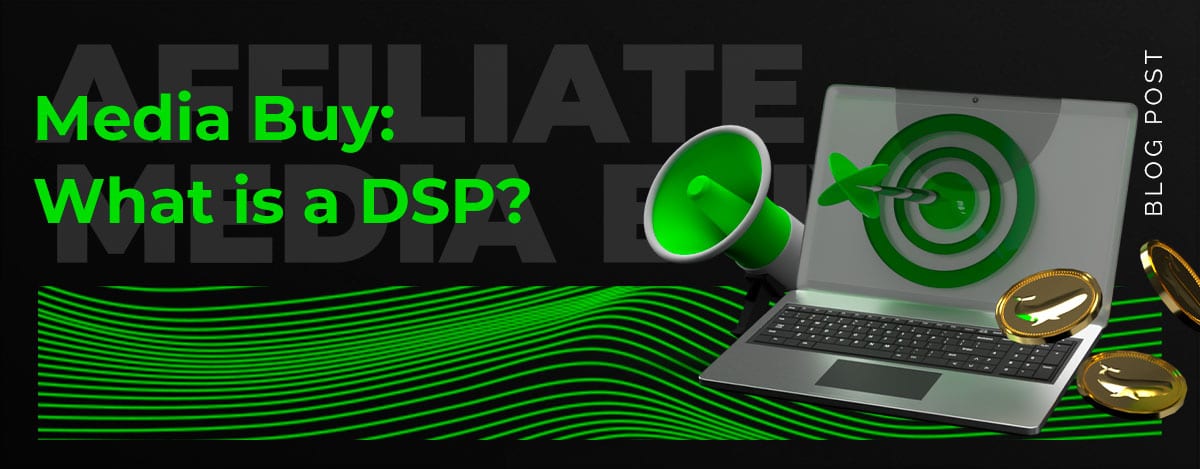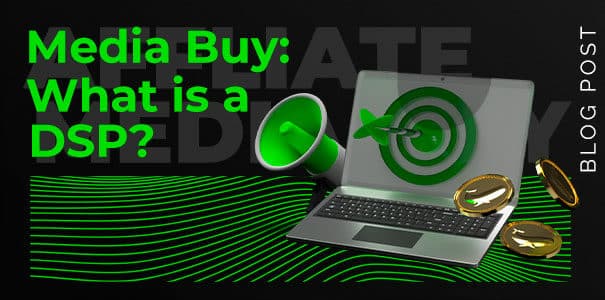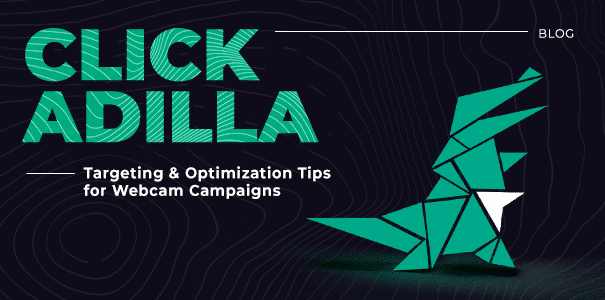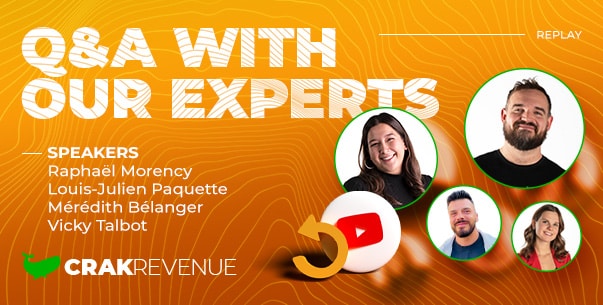Have you been wondering what is a DSP? A lot of new media buyers ask themselves this question and wonder if using a demand-side platform will benefit their programmatic advertising efforts.
To answer these questions and understand the reasons driving media buyers to work with at least one DSP, let's first take a short trip back in time.

In the past, negotiating media and publishing an ad could take days, even weeks.
Not so long ago, media buyers had to go through an often complicated and time-consuming process of contacting hundreds of publishers manually and going back and forth with multiple negotiations to find the best deal for the offers they wanted to advertise.
There was no such thing as a computer yet, so advertisers negotiated all the deals through phone calls and emails.
Once he sealed a deal, it was also difficult for a media buyer to adjust a campaign without causing an advertisement disruption. If the campaign delivered low performance, optimization was, in most cases, possible only at the end.
Then, in the middle of the 90s, digital advertising became the next big thing for advertisers, and the number of publishers quickly exploded.
At that moment, the emergence of Ad Networks allowed advertisers to find appropriate audiences to target with their ads more efficiently.
By centralizing and selling the traffic that hadn't been sold through direct deals, Ad Networks also provided a crucial infrastructure to help the booming supply sell its media inventory.
However, such networks didn't have the required technology & data to provide enough transparency regarding the specific publisher sites on which their ads were displayed and how competitive was the price paid by the advertiser for the bulk of media purchased.
Gradually, technological advances enabled Ad Networks to provide advertisers and publishers with more transparency and control over their campaigns and CPMs.
The development of a full range of new bidding and targeting services in the late 2000s sparked the beginning of a new era for programmatic advertising, allowing a wider reach with precise targeting and real-time bidding.
This moment was the birth of demand-side platforms (DSP).
Now let's see what it looks like today!

What is a DSP?
A demand-side platform (DSP) is a web server-based software system where brands, advertisers and media buyers can bid automatically on ad inventories from multiple ad sources.
Huh? Let's not get too technical for now:
A DSP is an automated media buying platform that allows you to purchase display, search, video, app and mobile ad inventory from multiple publishers on a single interface.
Today, media buyers looking to buy highly targeted digital ad space at scale do so on demand-side platforms, while publishers list their ad inventory on supply-side platforms (SSP).
In other words, a DSP (buyers) is the opposite of an SSP (sellers).

It is important to note that a demand-side platform regroups multiple networks (such as Google, Facebook & Instagram) across which you can bid and manage campaigns in real time.
Publishers can sell the ad inventory listed on a specific SSP on multiple DSPs.
How do both platforms connect?
The answer: Ad exchanges
An ad exchange is an automated marketplace that announces the impressions for sale listed on SSPs and tells media buyers what price they have to pay to purchase those impressions via real-time bidding (RTB).

What are the benefits of a DSP?
As you now know, a DSP is a programmatic advertising platform that allows media buyers to purchase highly-targeted ad inventory from multiple publishers at the same time and almost instantaneously, thanks to real-time bidding.
Why should I use a DSP?
Because the benefits of demand-side platforms for media buyers don't stop there.
Let's explore the top benefits of using a DSP:
Reach
While demand-side platforms offer the possibility of reaching a global audience, we also need to consider that each DSP can support various verticals and digital advertising formats.
They can also be connected with different ad exchanges (just like SSPs).
That means you can decide to work with a DSP according to how many (or which) ad exchanges it is connected to, but also your traffic requirements, the level of support you expect (expect a range from self-serve to full-service DSPs) and what type of data you need.
Data & Reporting
A DSP is also one of the media buyer's best assets because it gives you access to advanced reporting and analytics through real-time tracking.
For example, you can leverage first-party data (the information you collect about your customers through your website and CRM) to understand your audience better and broaden your reach.
First-party data generally includes demographic and behavioral information, such as your customer's name, age, gender, location, viewed pages, consumed contents, clicks, searches, and purchase history.
Most demand-side platforms also collect and aggregate what we call third-party data (provided by tracking from multiple sources), which you can use to enrich your first-party data, optimize your targeting and discover new audiences.
Along with this, a DSP allows you to generate insightful reports to track your performance and guide your strategic decisions.
Targeting
The ultimate goal of every marketer or media buyer is to deliver the right message to the right audience at the right time.
This goal becomes much more achievable with a DSP, as it gives you tremendous segmentation flexibility to target your audience with high accuracy.
For example, you can target an audience based on demographics (age, education, gender, etc.), location (geo-targeting), behavior (web user data), context (compatibility with a targeted website/application's content or category) and devices (desktop, mobile, tablet).
You can also deliver ads to prospective customers who have already visited your website or shown interest in your offer with a DSP's retargeting feature.
Optimization
Long gone are the days when advertisers needed to wait for the end of their campaign to optimize its performance and focus their budget on the best-performing placements.
Today, media buyers and brands have the power to ensure maximum efficiency and effectiveness at any moment.
For example, you can select the most suitable type of inventory for your ads to preserve your brand's integrity and achieve better engagement with the most relevant impressions.
If you notice that some impressions are underperforming, you can still adjust your budget instantly (e.g., focus on mobile devices) instead of closing your whole campaign.
In other words: you gain complete control of your campaigns and budget!
So as you can see, the benefits of demand-side platforms are numerous.
By now, I can almost hear you say:

Now that we've answered the questions What is a DSP? and What are its benefits?, let's see how a demand-side platform works!
How does a DSP work?
The media buying process with real-time bidding (RTB) on a DSP usually takes less than a second when someone visits a publisher's website with a computer or mobile phone.
We can explain this process with 5 simple steps:
- You (media buyer) define your target audience with the DSP's targeting options and upload your ads.
- Publishers list their inventory on SSPs (connected to the DSP through ad exchanges).
- The DSP receives the signal of an ad impression offer and triggers a bid decision based on the impression's relevance to your target audience.
- You compete automatically with other media buyers for the ad impression (RTB).
- If your bid wins, the DSP buys the impression and displays your ad on the publisher's website.
Now you know what happens behind the scenes every time a user loads a web page listed in a publisher's digital advertising inventory.
Doesn't it sound much simpler than it seemed in the first place?
Keep in mind that, besides RTB, other programmatic buying methods are possible through DSPs:
Private Marketplace (PMP)
A private marketplace is similar to RTB because it still operates through competitive bidding auctions. Multiple media buyers can bid on the same ad inventory within a PMP.
But as the name implies, a PMP isn't open to everyone.
To be able to bid in a PMP, you either have to get invited by publishers or, in some cases, submit applications to join.
Direct deals
Nurturing relationships with your Affiliate Manager and the traffic source(s) you are buying from is one of our 6 keys to succeed in media buying.
Why?
Because some golden opportunities aren't accessible through the DSP's open auctions.
Planning a chat with your representative to explain your strategy and state your needs could cause you to bypass the auction process and purchase media inventory directly from a publisher at a flat cost per mille (CPM).
[separator]
I hope this article helps you better understand what is a DSP, how the system typically works and why media buyers can't do without them.
There are numerous DSPs out there, but I suggest you check out Traffic Junky's DSP.
It is one of CrakRevenue's favorites for its massive volume of quality traffic, demographic targeting features, range of advanced services and strong experience in programmatic advertising.
You can read our complete Traffic Junky review & tutorial here.
That's it, folks!
Now let's make money.



